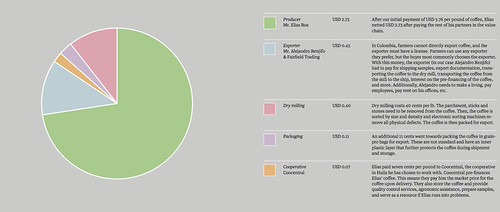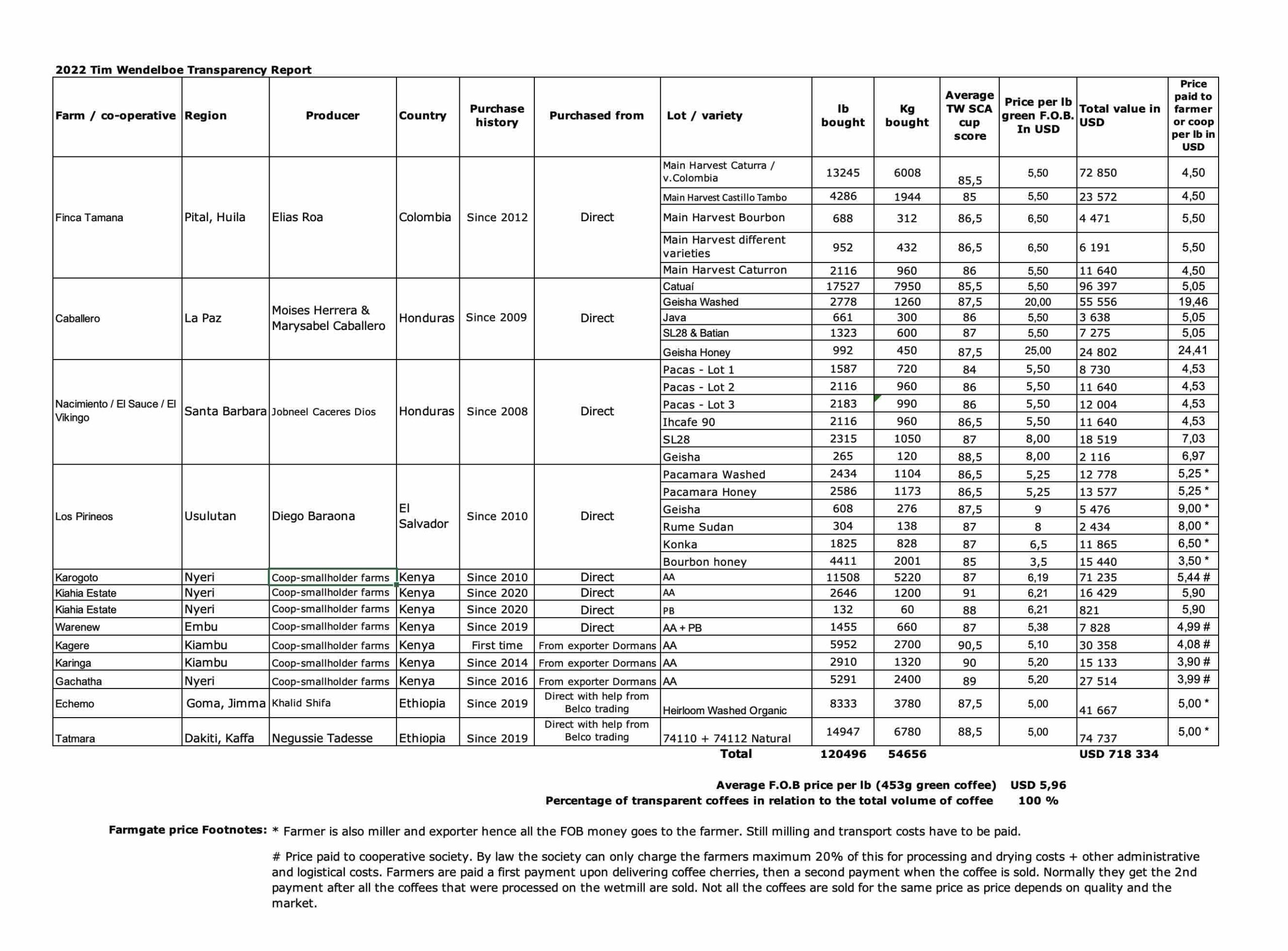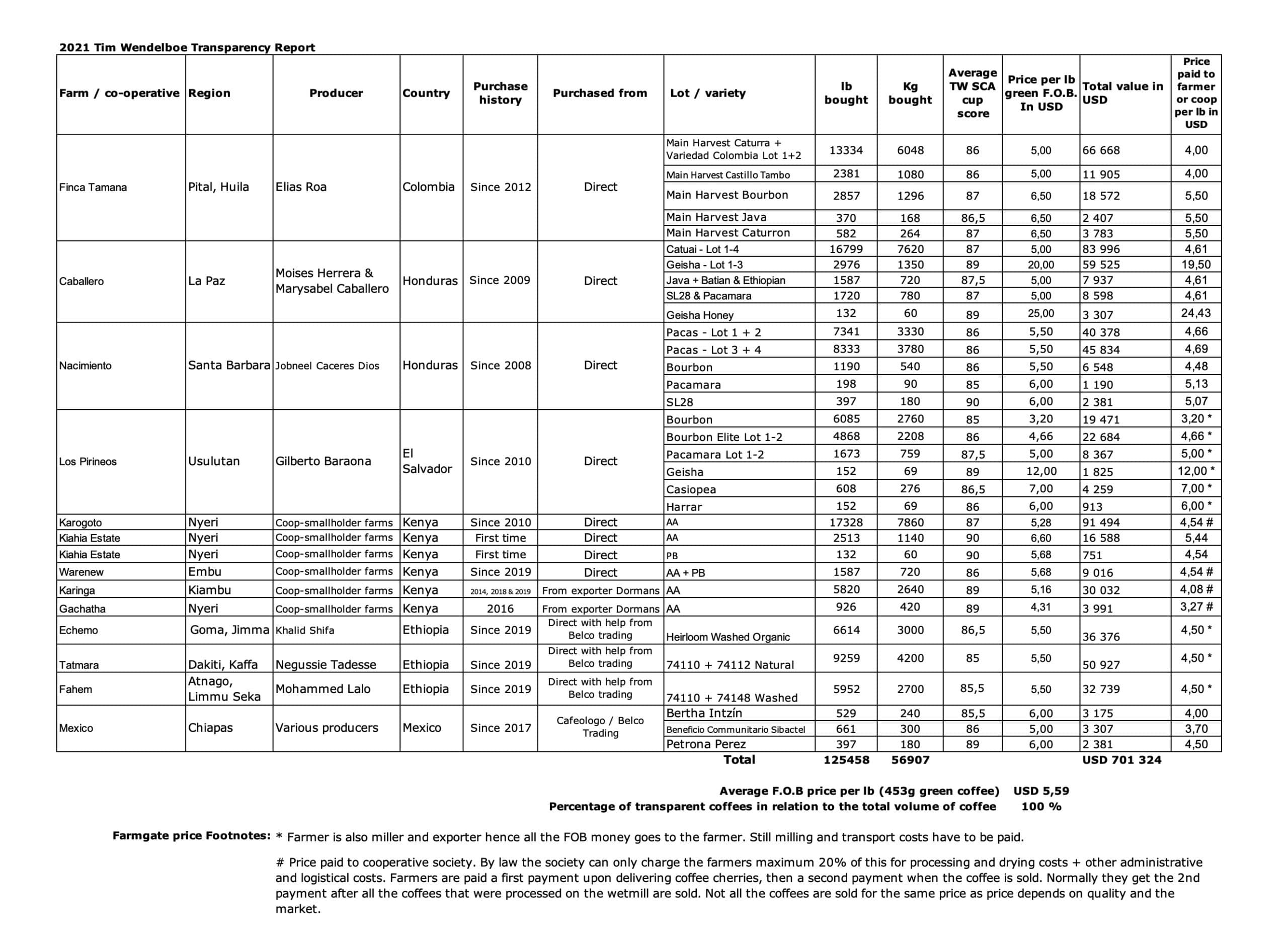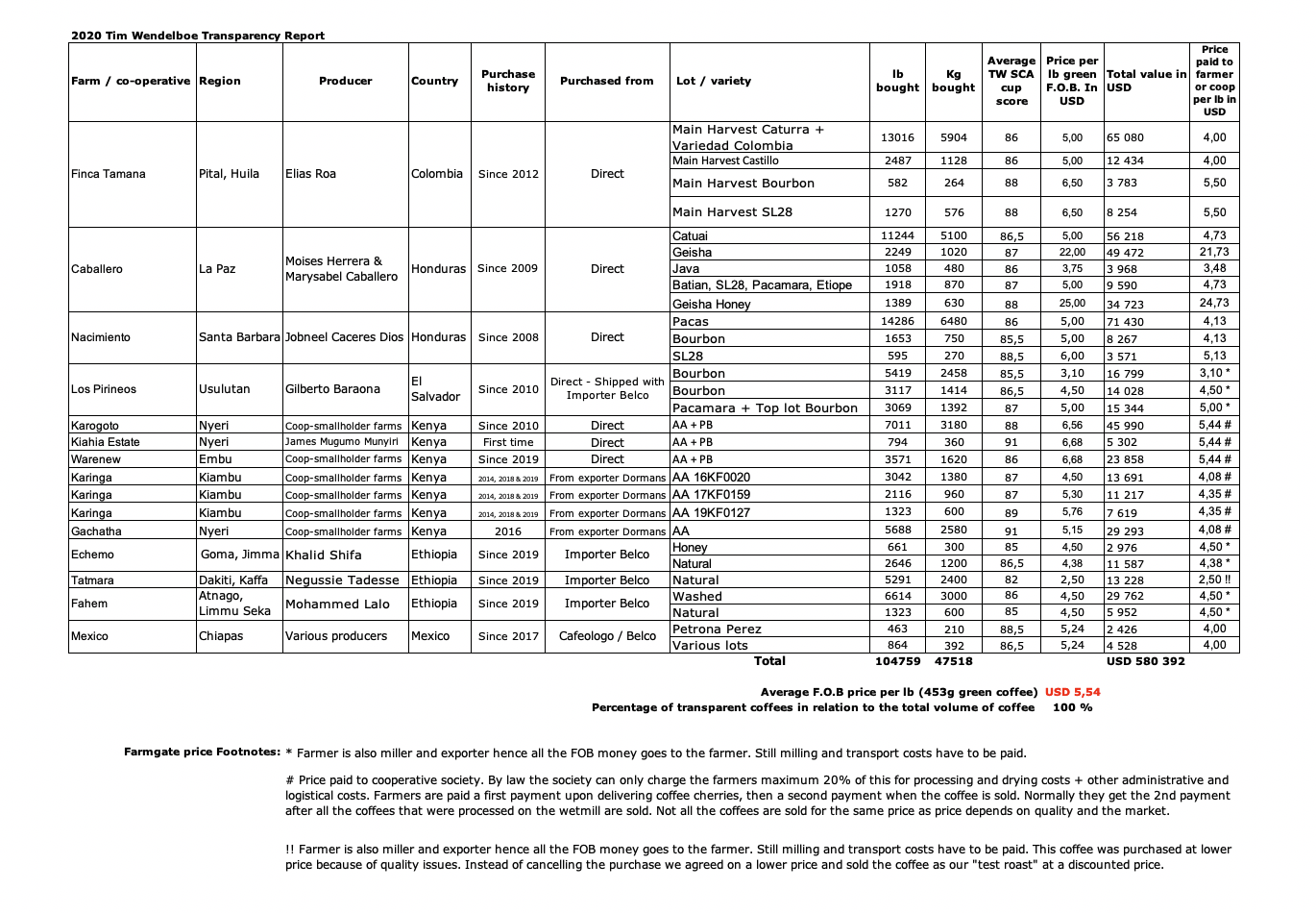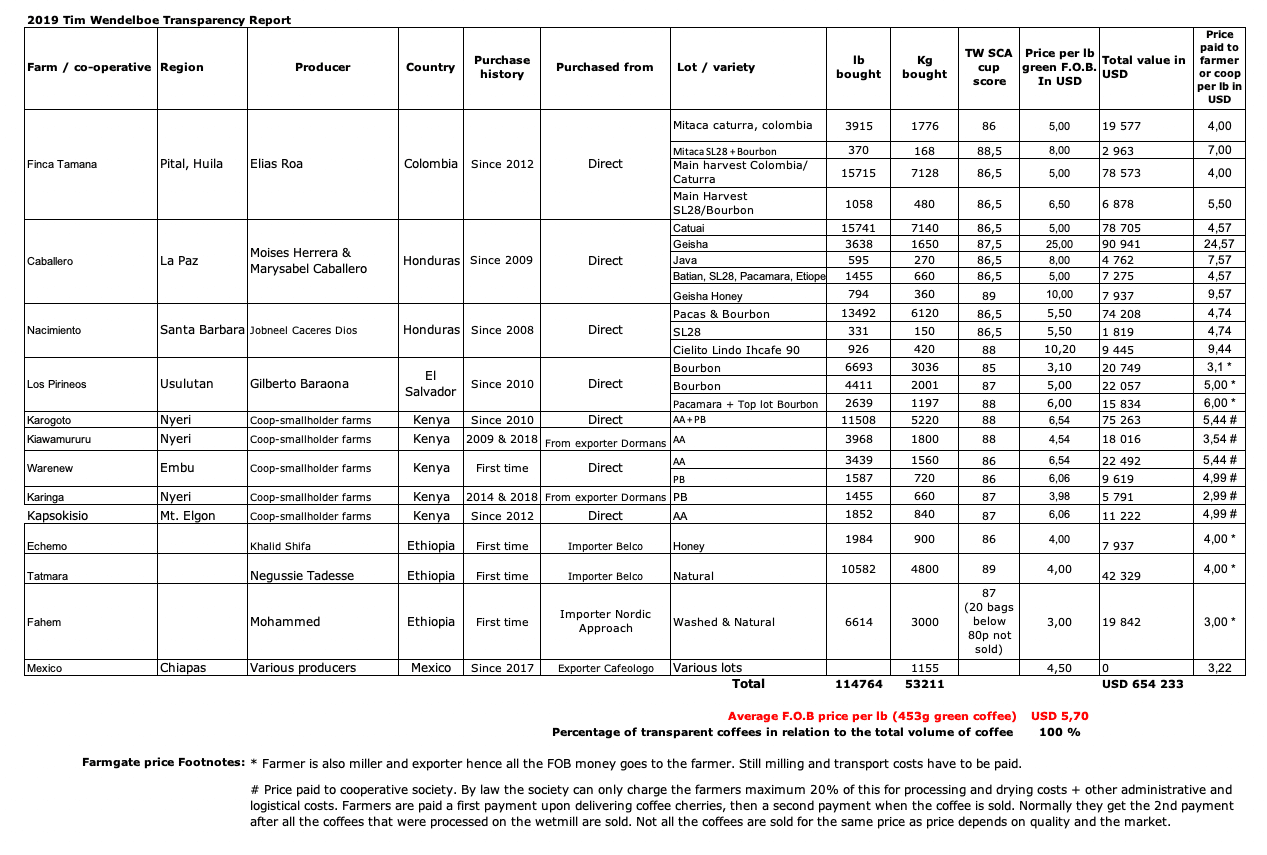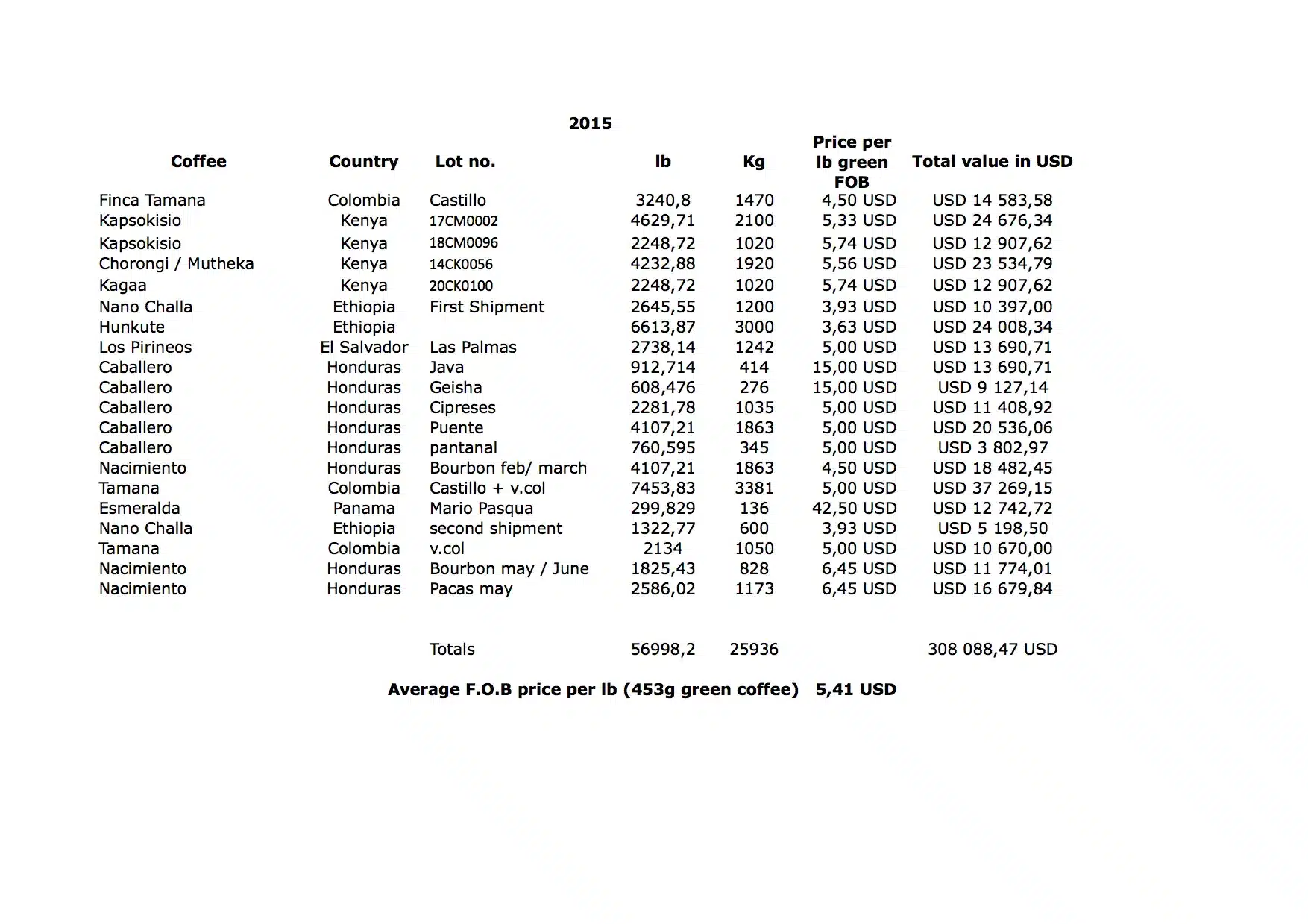
Transparency report 2015
Like always we want to be as transparent as possible and show you that there is a reason why our coffees cost a bit more. In the photo above you can see all the prices we paid for our coffee in 2015. The prices are per pound (lb=453g) og green coffee Free on Board (FOB), which means the price for the coffee packed and stacked in a container delivered to the ship.
Since the coffee trade can be challenging to understand we have written a small breakdown on it in our book “Finca Tamana” that you can see below. There you can see the price we paid for the coffee and who gets what. (The example is from 2012) Remember that purchasing models and logistics are different from country to country, so the break down will vary.
In addition to the cprice paid for the coffee we have to pay for shipping and once the coffee has arrived Europe or Norway, we have to pay for offloading / handling, customs clearance, financing, storage, rent, gas, electricity, bags, insurance, quality control and labour costs in order to produce the coffees. Of course our production costs are higher than for instance a big supermarket coffee brand as they can roast up to 20.000 kg of coffee per day whereas we normally would roast 200kg in a day. On average we paid USD 5,41 per lb of green coffee in 2015. This is a lot more than the commodity market price which today is about 1,26 USD per lb. With the production techniques we have helped implement on most of the farms we work with and buy from, such as slower drying on raised beds under shade, improved picking and sorting, etc, the commodity price would not even cover the production costs for most of the farmers we work with. Therefore we have to pay more in order to get the quality we prefer.
You might also notice that the prices we pay vary from country to country and lot to lot. This is because we look at the costs of production and the quality of the coffee when we negotiate prices. We used to pay more for the higher scoring coffees and less for the lower scoring coffees from the same farm, but this practice has stopped in 2016 as after spending a lot of time on the farms we work with, I have realized that the costs are the same for all the coffees they process after our required quality protocol regardless of the cup score. Therefore we are trying to look more at the actual cost of production and instead negotiate a price based on the production costs directly with the farmers.
Our main focus when buying coffees now is to make sure the trade is transparent and that the farmers get a good price for their coffee. This can be quite difficult in some countries yet very easy in others. It is a lot less complicated to work and communicate directly with a single farmer that has enough land to be able to process and dry his/her own coffee than dealing with cooperatives in East Africa. The challenge with the cooperatives is not necessarily transparency but that one lot of coffee can consist of coffees delivered by up to several hundred different smallholder farmers. Another challenge in East Africa is also to find partners that are transparent and can give something back to the farmers that is more than cash for the crop such as agricultural training.
We strongly believe that paying fair prices to the farmers is the best way of ensuring they continue their hard work and are able to invest in producing quality coffee in the future. We see all over the world that farmers are uprooting their coffee trees in favor of other cash crops as the commodity market coffee prices today are at best at a break even point but in most cases lower than the production cost. It simply is not sustainable and we need to change that.
Below is a fantastic lecture on the same topic by our friend Klaus Thomsen from the Coffee Collective in Copenhagen. If you are even slightly interested in coffee you need to watch his lecture.
If you want to learn more about our coffee trade model and why you need to pay more for quality coffee we have a small archive of previous posts about the topic here.

